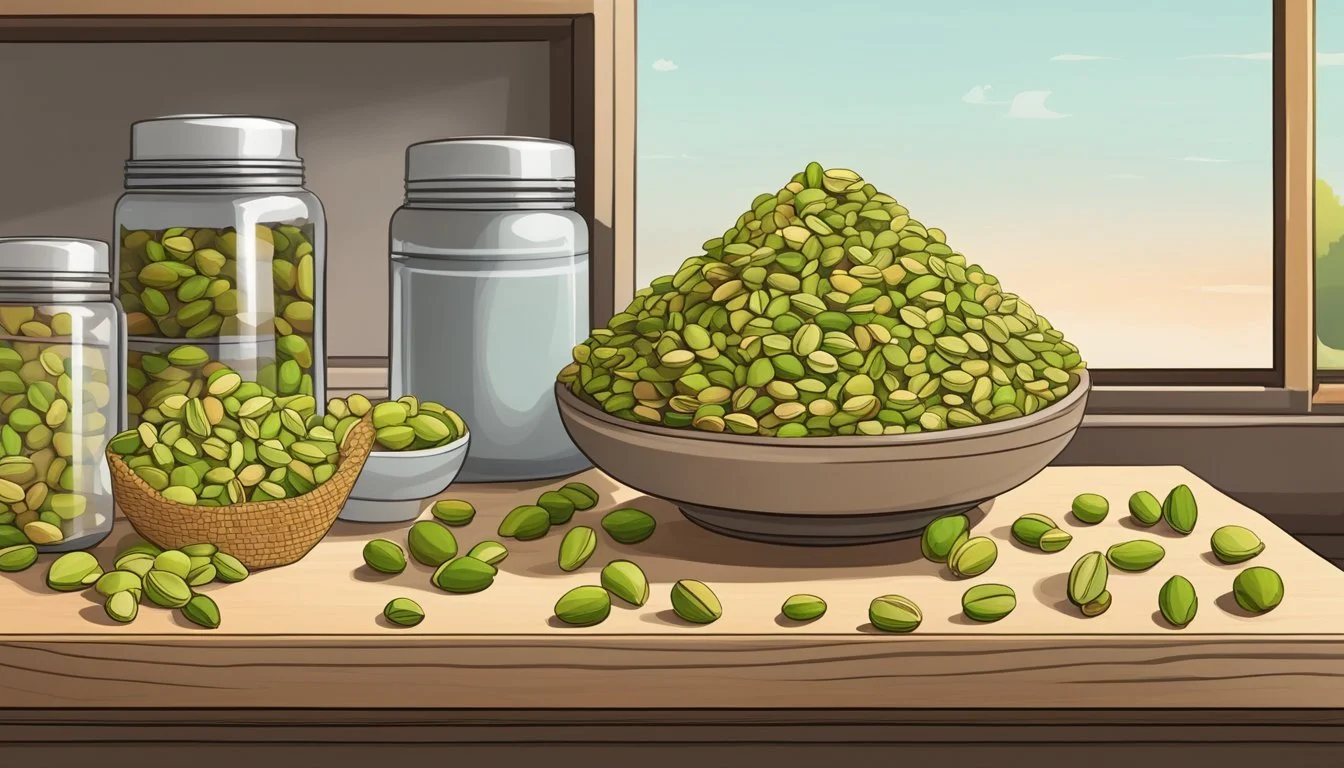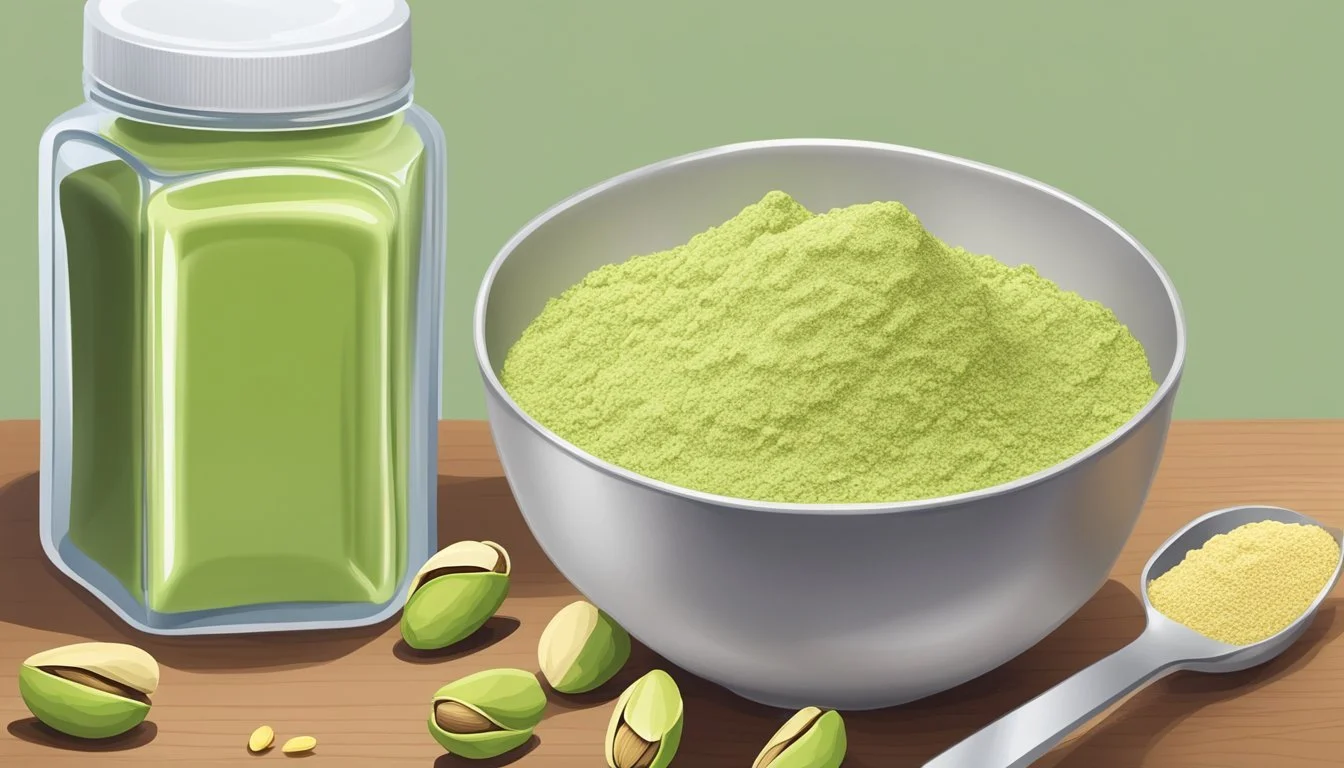Does Pistachio Protein Go Bad?
Understanding Shelf Life and Storage
Pistachios, a popular and nutritious snack, are celebrated for their rich content of protein, fiber, and beneficial fatty acids. These nuts not only satisfy hunger but also provide several health benefits. Yet, one crucial aspect to consider is whether the protein content in pistachios can go bad over time.
Yes, the protein in pistachios can go bad over time due to the high oil content that makes them prone to oxidation. This oxidation process impacts their overall freshness, leading to a breakdown of nutrients, including protein. Therefore, proper storage is essential to maintain the integrity of pistachios' nutritional benefits.
To ensure pistachios are consumed at their best, it's imperative to know the signs of spoilage and adopt optimal storage practices. Keeping pistachios in a cool, dry place, away from direct sunlight, can help prolong their shelf life and preserve their protein content, making sure that every bite remains as healthy and delicious as intended.
Understanding Pistachio Protein
Pistachios are not only tasty but also packed with nutrients that are beneficial for overall health, including protein, healthy fats, and essential vitamins and minerals. The protein content in pistachios is particularly interesting due to its role in dietary and muscle maintenance.
Nutritional Profile
Pistachios are a rich source of protein, providing around 5.8 grams in a 1/2-cup serving. This makes them a valuable addition to plant-based diets.
Besides protein, pistachios offer fiber, healthy fats, vitamins, and minerals. The fiber promotes digestive health, while the healthy fats, mainly unsaturated fats, support heart health. Pistachios also contain significant amounts of vitamin B6, vitamin E, and minerals such as potassium and magnesium.
Amino Acids and Muscle Maintenance
The protein in pistachios is made up of various amino acids, some of which are essential for muscle maintenance and repair. Essential amino acids like leucine, isoleucine, and valine are important for muscle protein synthesis.
These amino acids help reduce muscle fatigue and support recovery after physical activities. Regular consumption of pistachios can therefore benefit those looking to maintain or build muscle mass, making them a great snack for athletes and fitness enthusiasts.
Shelf Life Determinants
The shelf life of pistachio protein depends on several factors, which include packaging, environmental conditions, and processing methods. Proper handling and storage can significantly extend the freshness and nutritional value.
Packaging and Environment Factors
Pistachios should be stored in airtight containers to limit air exposure that can cause oxidation and spoilage. Keeping them in a cool, dark place helps maintain flavor and nutritional content. Light and heat accelerate the degradation process, especially for the high oil content in pistachios.
Unopened packages of pistachios can remain fresh for months on the counter or in the pantry. Once opened, it's crucial to transfer them to tightly sealed containers. Refrigerating or freezing pistachios can further extend their shelf life, preventing spoilage and maintaining their quality.
Impact of Processing on Shelf Life
The way pistachios are processed significantly impacts their shelf life. Roasted pistachios generally have a shorter shelf life compared to raw ones, as roasting can cause the oils to break down quicker. Similarly, shelled pistachios may lose freshness faster than unshelled due to increased exposure to air.
Salted pistachios can also have a different shelf life from unsalted ones. Salt may act as a preservative to some extent, but it can also lead to moisture absorption, which might speed up spoilage. Processed pistachios without added flavors or treatments tend to retain their freshness longer. Being aware of these factors helps in choosing the best storage method for maintaining shelf life.
Proper Storage Methods
Proper storage plays a critical role in maintaining the freshness and protein quality of pistachios. Effective storage methods can extend their shelf life, flavor, and nutritional value.
Short-Term Storage
For short-term storage, keeping pistachios in an airtight container is crucial. This minimizes exposure to air, which can oxidize the oils in pistachios and lead to spoilage.
Pistachios can be stored at room temperature in a pantry for about one to two weeks. Make sure to keep them away from direct sunlight and heat sources, which can degrade their quality.
Refrigeration is another excellent option for storing pistachios for up to three months. Place the nuts in a sealed container or a freezer bag to retain their freshness and prevent moisture absorption.
Long-Term Preservation
For longer-term storage, freezing pistachios is highly effective. Properly stored in a freezer, pistachios can last up to 24 months without losing their nutritional quality.
Use airtight containers or freezer bags to protect the nuts from freezer burn and other contaminants. Label the containers with the date of freezing to keep track of storage times.
Refrigeration can also be used for long-term storage but to a lesser extent. While it extends shelf life compared to pantry storage, refrigeration typically only lasts up to six months.
Freezing is preferred for maintaining optimal freshness and protein content over extended periods.
Recognizing Spoilage
Recognizing when pistachio protein has gone bad is essential to maintaining food quality. Indicators include both sensory cues, such as smell and taste, and visual signs like mold and discoloration.
Sensory Indicators of Rancidity
Sensory indicators are the first signs that pistachio protein may be rancid. Rancid pistachio protein will typically emit an unpleasant, stale, or sour smell. This rancidity stems from the oxidation of the nuts' natural oils.
Taste is another crucial indicator. Rancid pistachio protein may have a bitter or harsh flavor, which is markedly different from the nutty and creamy taste of fresh pistachio. Texture changes are also telling. Fresh pistachio protein should be firm and slightly crunchy, while deteriorating protein becomes soft and oily to the touch.
Visual Signs of Deterioration
Visual signs are also prominent indicators of spoilage. Color changes are often the first clue. Fresh pistachio protein should maintain a vibrant green or greenish-yellow hue, while spoiled pistachio may appear dull, brown, or even darkened.
Another visual sign is the presence of mold. Mold on pistachio protein often appears as white, green, or black spots, indicating it is unsafe to consume. Shriveling or wrinkling is also a sign of deterioration. Fresh pistachio protein should look plump and smooth, whereas spoiled protein will look shrunken or shriveled.
Employing these sensory and visual cues can effectively help identify when pistachio protein is no longer safe to eat, ensuring both quality and safety in food consumption.
Health Implications of Consuming Bad Pistachios
Consuming bad pistachios can have significant health impacts, particularly relating to digestive health and the risks of foodborne illnesses.
Effects on Digestive Health
When pistachios spoil, they can develop mold or bacteria that may upset the digestive system. Symptoms such as stomach cramps, diarrhea, and nausea often occur after consuming rancid or moldy pistachios.
These digestive issues can also exacerbate existing conditions like irritable bowel syndrome (IBS). In some cases, the mold may produce mycotoxins, which could interfere with gut health and potentially reduce nutrient absorption.
Potential Risks of Foodborne Illness
Spoiled pistachios may harbor bacteria such as Salmonella or E. coli, which can lead to serious foodborne illnesses. Symptoms can include severe stomach cramps, vomiting, and fever.
Additionally, the presence of aflatoxins, a type of toxin produced by certain molds, can pose risks to heart health and liver damage. Regularly consuming such contaminated nuts may also affect blood sugar control and cholesterol levels.
Maintaining a healthy diet requires being cautious of the nuts' quality. Regularly checking pistachios for off smells, discoloration, or odd tastes can prevent these health risks. Proper storage in a cool, dry place also helps mitigate the risks of spoilage.
Culinary Applications of Pistachio Protein
Pistachio protein is versatile in the kitchen, enhancing both sweet and savory dishes with its rich, nutty flavor. From savory meals to delectable desserts, pistachios can be incorporated in various forms, such as raw, roasted, or ground into flour.
Incorporating Pistachios into Meals
Pistachios can significantly elevate savory dishes. Crushed pistachios make an excellent crust for proteins like chicken or fish. This adds a delightful crunch and depth of flavor. They are also perfect for pesto, providing a unique twist compared to traditional basil and pine nut recipes.
Adding pistachios to salads is another fantastic option. They offer a satisfying crunch and can transform a simple salad into a gourmet experience. Pistachios can be mixed into grain-based salads, like quinoa or bulgur, enhancing texture and nutrition.
Oatmeal benefits from pistachio protein as well. Adding a handful of chopped pistachios to morning oats improves both taste and protein content, keeping one fuller for longer. Savory dishes like pilafs or rice dishes can also be enhanced with pistachios, adding an unexpected but delightful nutty element.
Baking and Snack Ideas
Pistachios shine in baking and snacking due to their robust flavor and texture. They are perfect for baking, easily incorporated into recipes for muffins, cookies, and cakes. Pistachio muffins are a popular choice, providing both taste and protein.
Desserts like pistachio ice cream offer a rich, creamy texture with a distinct nutty flavor. Similarly, pistachios can elevate classic desserts like biscotti, macarons, and layered cakes. Incorporating pistachio flour into baking can add a unique flavor and boost protein content.
For snacking, pistachios are an excellent choice either on their own or mixed into trail mixes. They can be used in homemade granola bars or simply roasted with a touch of salt. Their satisfying crunch and rich taste make them a favorite.
Nutritional Benefits Beyond Protein
Pistachios provide a range of nutritional benefits beyond their protein content. They offer heart health support, antioxidant properties, and benefits for weight and blood sugar management.
Heart and Vascular Health
Pistachios contain high levels of monounsaturated and polyunsaturated fats, which are known to support heart health. These healthy fats can lower LDL cholesterol levels, reducing the risk of heart disease.
The nuts are also rich in potassium, which helps maintain normal blood pressure. Additionally, pistachios supply essential fatty acids that support vascular function and can help prevent arterial stiffness. Regular consumption of pistachios, as part of a balanced diet, can enhance cardiovascular health due to these nutritional components.
Vision and Antioxidant Support
Pistachios are packed with antioxidants such as lutein and zeaxanthin, which are vital for eye health. These carotenoids protect the eyes from damage caused by blue light exposure and decrease the risk of age-related macular degeneration.
The nuts are also rich in vitamin E and other antioxidants that help neutralize free radicals, reducing oxidative stress and inflammation. This antioxidant support is essential for maintaining healthy vision and protecting cells from damage.
Assisting Weight Management
Despite being energy-dense, pistachios can support weight management. They are relatively low in calories and high in dietary fiber, which helps increase the feeling of fullness and reduce overall calorie intake.
Research suggests that the body's absorption of fat from pistachios is incomplete, meaning fewer calories are metabolized. Including pistachios in the diet can aid in weight loss or maintenance by promoting satiety and reducing hunger.
Diabetes and Glycemic Control
Pistachios can also be beneficial for managing diabetes and blood sugar levels. They have a low glycemic index and contain nutrients like phosphorus and thiamin, which help with glucose metabolism.
Their fiber content slows the absorption of sugar into the bloodstream, reducing insulin spikes. Moreover, consuming pistachios has been shown to lower fasting blood sugar levels and improve glycemic control, which is crucial for individuals with diabetes.






